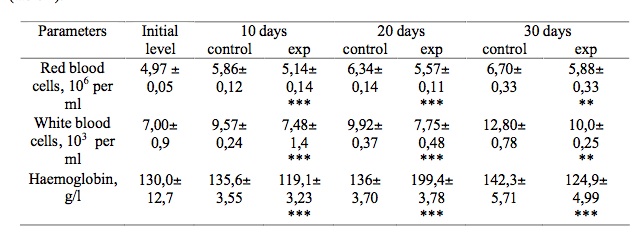
Mycotoxins and Food Safety
By J.DVORSKA FOTINA T.I. FOTINA H.A and PETROV R.V.
Features Profiles ResearchersWEB EXCLUSIVE
Mycotoxins and Food Safety
Researchers from Sumy National Agrarian University report that mycotoxins not only affect animal health, but that they can have an effect on human health as well. Mycotoxins can accumulate in meat, milk and eggs and cause chronic health problems for humans.
For food derived from animals, the hazard may originate from a number of sources
including the consumption of contaminated feed by livestock resulting in contaminated
animal products.. So the problem of mycotoxins does not end in feed or reduced animal
performance. Many are transferred into meat, visceral organs, milk and eggs. When
ingested, mycotoxins may cause a mycotoxicosis which can result in an acute or chronic
disease episode. Chronic conditions have a much greater impact, numerically, on human
health globally. Reduced growth and development, immunosuppression and cancer are
chronic effects that have a high incidence following continual exposure to low level
mycotoxin ingestion as is experienced in many developing countries.
In our experiments we established that aurofusarin can accumulate in eggs and was
associated with changes in egg yolk colour from yellow-orange to dark-brown and
decreased egg quality (changes in lipid profiles and antioxidant concentrations). We do not
have any results of humans consuming those eggs. But in our next experiment, we used rats as
a model for humans.
During feeding of rats with meat from quail infected with E.coli and fed a zearalenone
contaminated diet we found changes in gematological and serological parameters of blood
(table 1).

During experiment rats were in good conditions. Ttheir welfare was not changed, they
looked and acted healthy. But performing a blood analysis we established that the blood
parameters of experimental rats were changed: red blood cells count was reduced to 5.88 million/ml, white blood cells count was reduced to 10 thousand/ml, protein concentration was
reduced to 59.82 g/liter.
Results of our experiment suggest that feeding of meat from E. coli infected quail fed
a zearalenone contaminated diet can decrease the health status of mammals. So poultry meat
from infected bird fed zearalenone contaminated diet could have some biological impact on
consumer health. Food will always represent some minimal biological risk for consumers and
it is the task of the food and feed industry to maintain the level of risk of products of animal
origin at the lowest possible level by applying practical and technologically feasible measures
to prevent hazards.
Can we say that food of poultry origin we eat is free from mycotoxins and is safe?
Dvorska, J.E. and Surai P.F (2004). Asian-Austalasian J. Anim. Sci. 17: 434-440
___________________________________________________________________________
Department of Veterinary Medicine, Sumy National Agrarian University, Sumy, 40021.
Print this page